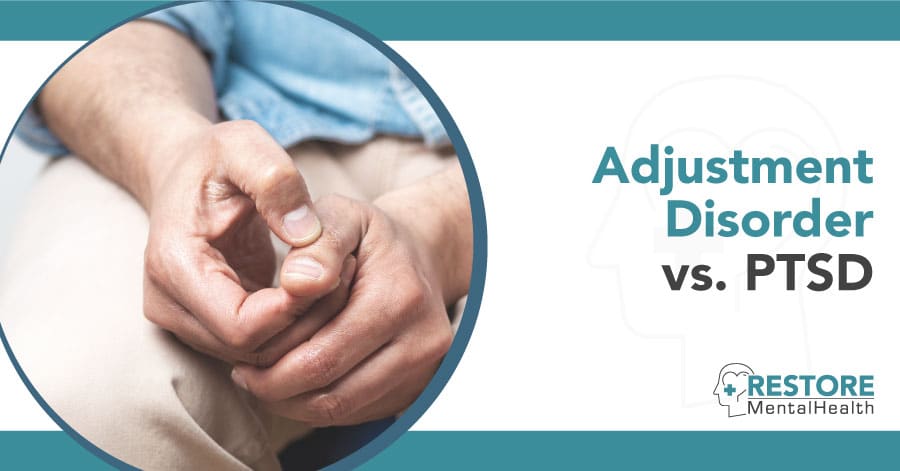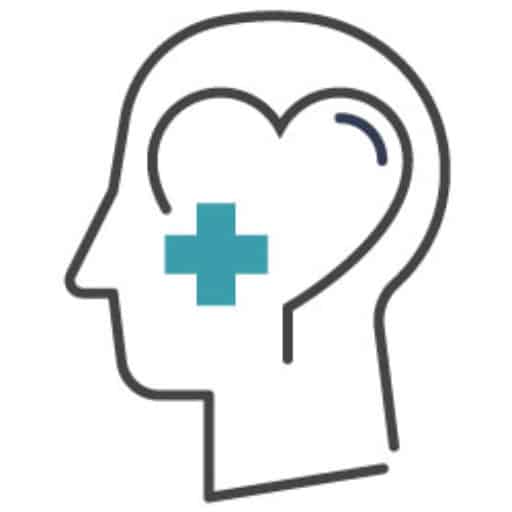Post-traumatic stress disorder (PTSD) and adjustment disorder are trauma-related disorders, and both can be classified as a stress response syndrome. Since symptoms of these illnesses are similar, they’re frequently mistaken for each other.
Although both conditions are induced by traumatic or stressful situations, they differ significantly in many respects. Understanding the subtle differences between adjustment disorder vs. PTSD and obtaining a proper diagnosis is paramount to receiving effective treatment.
What Is an Adjustment Disorder?
Adjustment disorders are stress-related conditions brought on by an inability to adapt to significant life changes. You suffer more stress than expected after a traumatic or unexpected occurrence, and the stress produces substantial issues in your relationships, at work or at school.
Stress can be caused by work troubles, moving away to school, sickness, the death of a loved one or any number of other life upheavals. People usually acclimate to such adjustments within a few months. However, if you have an adjustment disorder, you may continue to experience emotional or behavioral responses that lead to feelings of anxiety or depression.
The clinical definition of an adjustment disorder as outlined by the DSM-5 is “the presence of emotional or behavioral symptoms in response to an identifiable stress occurring within 3 months of the onset of the stress.” Additionally, the stress response is typically disproportionate to the situation and leads to impairment of normal functioning.
Types of Adjustment Disorders
According to the DSM-5, there are 6 types of adjustment disorders, each with its own unique set of characteristics:
- Adjustment disorder with depressed mood
- Adjustment disorder with anxiety
- Adjustment disorder with mixed depressed mood and anxiety
- Adjustment disorder with disturbance of conduct
- Unspecified adjustment disorder
Symptoms of Adjustment Disorders
The symptoms of adjustment disorder frequently appear during or shortly after a stressful incident and can be mental and/or physical. While the condition typically only lasts six months, symptoms may persist if stress isn’t addressed. Some individuals may experience only one symptom, while others can experience an array of challenging symptoms. These symptoms include:
- Feeling depressed
- Crying often
- Anxiety and nervousness
- Difficulty sleeping
- Appetite loss
- Problems concentrating
- Difficulty carrying out daily chores
- Withdrawal from social events
- Avoiding critical tasks
- Suicidal ideation
The presence of one or more of these symptoms alongside having recently experienced a significant life change may indicate the presence of an adjustment disorder. Restore Mental Health has a range of inpatient and outpatient programs that can help you get back on your feet after a big life change. Our team of trained psychological professionals is here to assist with your personal mental health needs.
What Is PTSD?
Post-traumatic stress disorder develops in some people after witnessing or experiencing a shocking, frightening or tragic event. It’s normal to feel scared during and after a traumatic event. Fear causes several split-second changes in the body to protect against or escape harm. This “fight-or-flight” response is a common reflex designed to keep a person safe.
Almost everyone will have a variety of responses to trauma, but the majority of individuals will recover organically from the initial symptoms. Those who continue to have issues may be diagnosed with PTSD. People suffering from PTSD may experience tension or fear even when they’re no longer in danger.
While the term “PTSD” is relatively new, the condition itself is not. In fact, PTSD has been affecting war veterans for a long time. The term “shell shock” was first used to describe the condition during World War I, when soldiers were exposed to the horrific conditions of trench warfare. During World War II, the condition was known as “battle fatigue.” It wasn’t until after the Vietnam War that PTSD became a diagnosable condition. Today, PTSD is recognized as a serious problem that can affect anyone.
Seventy percent of adults will suffer at least one traumatic incident in their lives, and 20% of those will develop PTSD. It’s important to note that PTSD can progress into a chronic condition that requires professional treatment. If you’re experiencing one or more of the following symptoms and suspect you might have PTSD, it might be time to seek help.
Symptoms of PTSD
Symptoms can vary from person to person. Some people may experience flashbacks, while others may have nightmares or feel constantly on edge. Symptoms can also vary in intensity, with some people only experiencing mild symptoms and others feeling completely overwhelmed by them.
One of the most common symptoms of PTSD is avoidance of reminders. This is when a person tries to avoid anything that might trigger their memories or make them feel uncomfortable. This can include avoiding certain places, people or activities.
Other symptoms include intrusive thoughts, flashbacks and feeling numb or disconnected from emotions. It can also lead to hypervigilance and feeling a constant sense of danger. Symptoms of PTSD can last for weeks, months or even years after the event that caused them.
Adjustment Disorder vs. PTSD
Due to the similar nature of symptoms of both disorders, the difference between PTSD and adjustment disorder can be difficult to grasp.
When people experience a traumatic event, it’s not uncommon for them to feel like they’re “not themselves.” They may have trouble sleeping, concentrating or eating. In some cases, these symptoms only last a few weeks and then go away. This is known as an adjustment disorder. An adjustment disorder occurs when the symptoms interfere with a person’s ability to function in their daily life. However, symptoms would not be severe enough to meet the criteria for post-traumatic stress disorder.
In general, PTSD is a more serious condition. Symptoms of PTSD can include flashbacks, nightmares, severe anxiety and avoidant behavior. Unlike an adjustment disorder, which typically goes away on its own, PTSD requires treatment from a mental health professional.
The Importance of Proper Diagnosis
If you have PTSD or an adjustment disorder, getting a proper psychiatric diagnosis is important for a number of reasons. First, PTSD and adjustment disorders can be debilitating conditions that significantly impair an individual’s quality of life. Neglecting these conditions can lead to worsening symptoms that can be more difficult to treat. Secondly, PTSD and adjustment disorders are often comorbid with other psychiatric disorders like depression and anxiety. In severe cases, people may experience life-threatening suicidal ideation.
Finally, treatment may differ depending on which diagnosis you have. For this reason, it’s necessary to have an accurate picture of your situation so you can engage in a treatment plan that’s specific to your case.
Treatment Options
Treatment for an adjustment disorder or PTSD often includes therapy such as cognitive behavioral therapy or exposure therapy. This is aimed at helping individuals develop coping skills for the stress their disorder causes them. In more severe cases, therapy may be prescribed in parallel to psychopharmacological treatment aimed at reducing stress or depression.
Restore Mental Health is ready to assist you with your personal mental health needs. Our trained professionals are on 24/7 standby, ready to take your call. Contact us today at (877) 594-3566 and start your journey to recovery.



